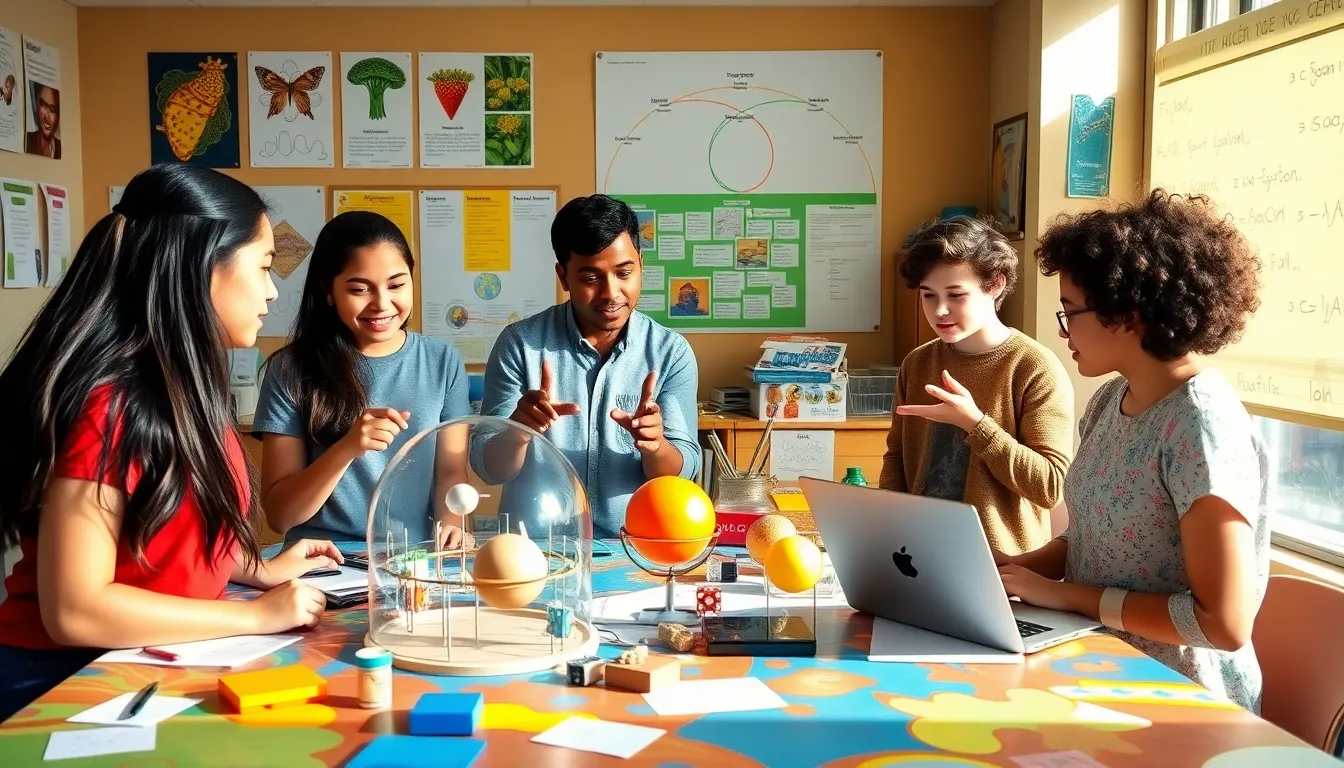Integrated science education is gaining traction as educators recognize the need to prepare students for a world where disciplines overlap. This approach marries various scientific fields, fostering a more holistic understanding of the natural world. With resources like Redwebzine stepping into the spotlight, the possibilities for innovative curriculum design and collaborative learning are expanding. This article explores the essentials of integrated science education, the benefits it offers, Redwebzine’s crucial role in this movement, practical case studies, potential challenges, and future directions for this educational model.
Table of Contents
ToggleUnderstanding Integrated Science Education

Integrated science education is an instructional method that combines multiple scientific disciplines, such as biology, chemistry, physics, and earth science, into a coherent learning framework. Rather than teaching these subjects in isolation, integrated science education encourages students to draw connections between the concepts, promoting a more comprehensive understanding of scientific principles and their applications. This approach simplifies complex scientific ideas and prepares students for real-world problem-solving.
Also, integrated science education encourages inquiry-based learning, where students explore questions that reflect real-life challenges. By doing so, they gain critical thinking skills and learn to approach problems from various angles, which is essential in fields like environmental science, engineering, and medicine.
Benefits of Integrated Science Education
The advantages of integrated science education are multifaceted.
- Enhanced Engagement: By weaving together different scientific disciplines, integrated science appeals to diverse learning styles and interests, making lessons more engaging for students. This cross-disciplinary framework captivates students’ imaginations and fosters a love for learning.
- Real-World Applicability: In our increasingly complex world, integrated science education reflects the interconnectedness of scientific concepts. It prepares students for careers in STEM fields by helping them understand how knowledge from various domains can work together to solve real-world problems.
- Improved Critical Thinking: Students engaged in integrated science education are better equipped to think critically. They learn to analyze data, evaluate evidence, and explore hypotheses, skills that are essential in any scientific inquiry.
- Collaboration Skills: Working on integrated projects often involves teamwork, which fosters collaboration skills that are increasingly valuable in today’s workplace. Students learn to communicate effectively, solve conflicts, and appreciate diverse perspectives.
Redwebzine’s Role in Science Integration
Redwebzine is emerging as a pivotal resource in the promotion of integrated science education. Through a variety of articles, case studies, and instructional materials, it provides educators with valuable insights and tools to enhance their teaching strategies.
Curriculum Development for Integrated Science
Redwebzine facilitates the development of integrated science curricula that can create engaging and comprehensive learning experiences. By offering a repository of materials that link various scientific disciplines, educators can construct lessons that illustrate the interconnections between subjects, giving students a thorough education in the sciences.
Collaborative Learning Approaches
Also, Redwebzine encourages the use of collaborative learning approaches. The platform fosters community among educators, promoting the sharing of successful tactics and resources that can be implemented in classrooms. Collaborative projects highlighted on Redwebzine illustrate how students can work together across various scientific fields, enhancing their learning through peer interactions.
Case Studies of Integrated Science in Practice
Practical applications of integrated science education can be seen in numerous case studies across different educational settings. For instance:
- The Eco-Science Project: At a leading high school, students combined biology, chemistry, and physics in a project focusing on local environmental issues. They conducted experiments to measure water quality while studying chemical processes affecting aquatic life, demonstrating the relevance of interdisciplinary approaches.
- STEM Partnerships: In partnership with local universities, a middle school initiated an integrated science program in which students collaborated on real-time research projects. By working alongside university students and faculty, they applied theoretical knowledge to solve practical problems, thereby enhancing both their technical skills and academic confidence.
Challenges and Solutions in Implementation
Even though the benefits of integrated science education, several challenges exist in its implementation.
- Curriculum Constraints: Teachers often face rigid curricular standards that emphasize rote memorization over critical thinking and interdisciplinary learning.
- Solution: Institutions can advocate for flexible curricula that allow for the blending of subjects. Professional development programs can also equip teachers with strategies to integrate content while meeting educational standards.
- Resource Limitations: Schools may lack the necessary resources, such as laboratories and technology, to carry out integrated science projects effectively.
- Solution: Collaborative grants or partnerships with local businesses and higher education institutions can provide funding and resources, creating opportunities for more hands-on learning experiences.
- Teacher Training: Many educators may feel unprepared to teach integrated science due to their background in single disciplines.
- Solution: Institutions can offer ongoing professional development focused on interdisciplinary teaching methods and innovative assessment techniques.
Future Directions for Integrated Science Education
The future of integrated science education appears promising as more educators and institutions recognize its significance. Some potential directions include:
- Increased Technology Integration: As technology continues to evolve, its inclusion in science education will likely enhance learning experiences. Virtual labs, simulations, and other digital tools can provide students with immersive environments to explore scientific concepts across disciplines.
- Emphasis on Sustainability: With growing awareness of environmental issues, integrated science education will likely focus more on sustainability. Curriculum that encompasses ecological principles and chemical processes will prepare students to tackle pressing global challenges.
- Community-Based Learning: Future integrated science programs may increasingly incorporate community engagement, allowing students to relate their learning to the real world. By collaborating with local organizations, students can contribute to practical solutions while enhancing their understanding of integrated science.
Conclusion
To conclude, integrated science education represents a transformative approach to learning that holds great potential. By breaking down traditional barriers between scientific disciplines, it fosters a more comprehensive understanding of the world. Through resources like Redwebzine, educators are better equipped to create engaging, relevant, and effective integrated science curricula. Although challenges remain, the future of integrated science education is bright, offering promising pathways for the next generation of scientists and thinkers.
